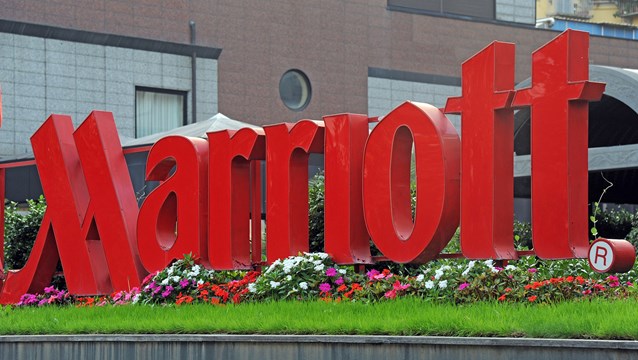Marriott International saw global RevPAR drop 84.4% in the second quarter, with Marriott CEO Arne Sorenson telling investors that the three months through June “will mark the bottom, and that the worst is now behind us.”
“Since April, occupancy levels have increased each month in every region around the world, albeit at varying rates,” Sorenson said during Marriott’s Q2 earnings call on Monday. “There’s still no visibility around when RevPAR could return to 2019 levels, however the global industry trends experienced over the past couple of months give us confidence that people will continue to increase their travel.”
Around 9% of Marriott’s properties worldwide currently remain closed, versus a high of more than 25% shuttered hotels back in April.
Globally, occupancy has hit 31% across the Marriott portfolio. For hotels that remained open for each of the past four months, occupancy is averaging 39%.
By region, Greater China saw the most dramatic recovery trends in the second quarter, with occupancy up from single digits in February to a current level of approximately 60%. RevPAR in the market for July was down 34% on the year prior.
Sorenson attributed much of Greater China’s resilience to robust domestic travel demand. He estimated that pre-Covid, close to 80% of the market’s room nights were sourced from guests within China.
“At the current rate of recovery and assuming no wide resurgence of Covid-19, the Greater China market could approach 2019 occupancy and RevPAR levels as early as next year, even assuming limited international guests,” said Sorenson. “Generally, what we see in China bodes well for the U.S.”
In North America, Marriott reported a RevPAR drop of 69% year over year, with around 96% of the region’s hotels currently up and running.
In the U.S., however, Sorenson added that “the virus numbers are frustratingly high.” Still, he remained optimistic that American travelers are eager to get out, with Covid-19 outbreaks in certain U.S. markets over the summer having little impact on longer-term recovery trends.
“If you look at the July numbers as a whole, it shows the gratifying resilience of American travelers,” Sorenson added. “First of July, this virus resurges a little bit. Then we see a bit of a pause after July 4. But as the month continues, we go back to trend, essentially, and see occupancy build in each week by a point or a point-and-a-half compared to the prior week.”
The Europe, Middle East and Africa (EMEA) and Caribbean and Latin America regions experienced the lowest occupancy levels and steepest RevPAR declines over the quarter. Around 75% of Marriott’s hotels in EMEA and 70% in Caribbean/Latin America were closed for most of the second quarter. Currently, just under 30% of Marriott properties remain closed across both regions.
Sorenson attributed challenges in EMEA and Caribbean/Latin America to a mix of rising Covid-19 case counts and a higher dependence on international travel.
In 2019, Marriott’s percentage of room nights from international travelers was 40% in Europe, 50% in the Middle East and Africa and 60% in the Caribbean and Latin America.
Meanwhile, Marriott executive vice president and CFO Leeny Oberg addressed concerns over permanent hotel closures, telling investors that thus far, Marriott’s deletions are below levels expected “in normal times.”
“So far, we’ve seen really strong capabilities on the part of the owners to be able to find access to the liquidity they need to keep the hotels going, and the banks have shown a clear willingness to essentially press pause for a while,” said Oberg. “We clearly are going to see a bunch of foreclosures through all of this, but that doesn’t necessarily mean the hotels close. The banks want to preserve the value of the asset; keeping the brand on it is the best way to do that.”
Oberg added that the Times Square Edition in New York, a newer Marriott property that announced plans to permanently shutter in May, “is a great example of where lenders have stepped in.” That property, she said, could reopen.

























